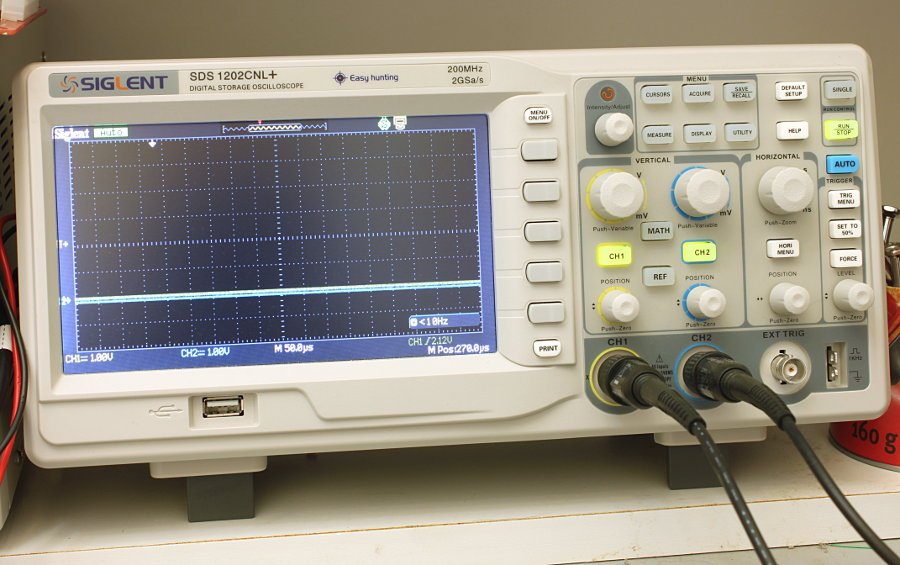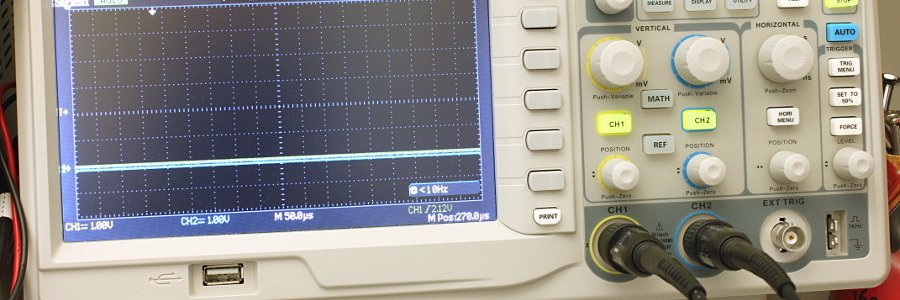Ever since I was a youngster I've always wanted an oscilloscope. I didn't know much about them, but I knew that every electronics lab has them and they looked like they must be a good thing to have. Several months ago I finally broke down and decided to go oscilloscope shopping. I ended up with a Siglent SDS1202CNL+.

Since I knew very little about scopes I went with my usual method when buying somewhat expensive things I don't know much about. I figure you won't know what to buy until you've bought one and used it long enough to learn what you really wanted/needed. If you happen to guess right and buy the right one first time... bonus! If you guess wrong then you can either sell it off or have two. :D :D
I Googled around and saw that most hobbiests were buying Rigol 1052E scopes, and lately that's changing to the newish Rigol DS1054Z.
After some deliberation I decided to buy from a Canadian dealer, both for possible warranty issues and because after shipping & taxes & currency exchange the price was only a tiny bit higher than buying it from the US or China.
I checked out <a href="http://www.dipmicro.com/store/ target="_blank"">Dipmicro Electronics and saw that they were selling Siglent scopes. More Googling...
I found that Siglent has a pretty good reputation for making decent equipment. I sort of picked one that was pretty close to the Rigol 1052E specs and then dithered about it for a week or two... Finally I decided to go for a "better, faster" unit for a fair bit more money.
Of course as soon as I had placed my order and the scope was shipped I started to realize that maybe I hadn't made the best choice. The SDS1202CNL+ might be faster than a 1052E, but it has very, very little memory. I was kind of freaking out about it at first, but the scope has turned out just fine for what I use it for.
In retrospect, the slower scope with more memory might have been a better deal for me, but the 1202CNL+ works great so far.
Here I'm using the scope to look at SPI clock (yellow trace) and wiper voltage (blue trace) on a MCP41010 digital pot, controlled by a PIC18F1320.
For getting new devices and the driver code for them working, and for troubleshooting, the scope is a massive time saver. Years ago I bought a Saleae logic analyzer, which is a really awesome tool for the same kind of things, but it's not quick and real-time like a scope. With the oscilloscope hooked up to a circuit I can tell at a glance if something is happening, and with a bit of knob twiddling, exactly what is happening. It eliminates vast amounts of confusion and guesswork. It's a wonderful tool!
